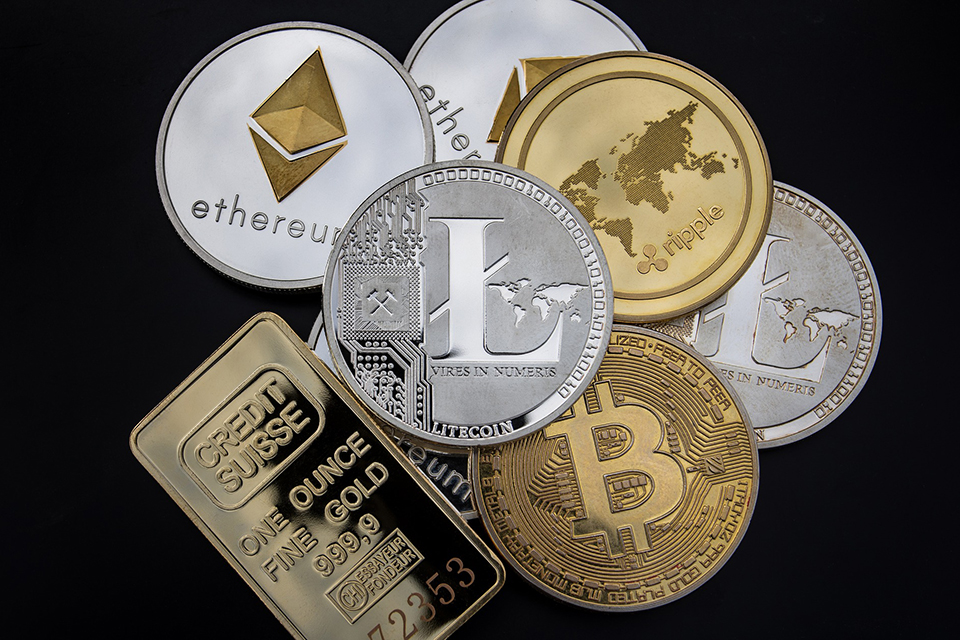Expert Q&A on cryptocurrency, payment systems and future of money

The war in Ukraine has pushed cryptocurrency and cashless transactions into the forefront of geopolitics, with crypto and online platforms being used to get money to Ukrainians, while others could use crypto technology to elude sanctions. How are changes in money transforming society and how will these changes impact our lives in the future?
Anthropologist Daromir Rudnyckyj is founding director of a new lab at the University of Victoria. The Counter Currency Laboratory, housed in UVic’s Department of Anthropology, focuses on money, community currencies and the future of payment systems.
I started the lab as a means of better understanding the past, present and future of money, and to give undergraduate and graduate students a chance to work with one-of-a-kind materials.
—UVic anthropologist Daromir Rudnyckyj, founding director of the new lab at UVic
Q. What role is crypto playing in geopolitics right now, with Russia’s attack on Ukraine and the sanctions against Russia?
A. Russia is becoming increasingly isolated from the global banking and monetary system. Some people have speculated that cryptocurrency may enable Russia to evade sanctions. That’s because of cryptocurrency’s anonymity and the fact that it’s a completely decentralized network that’s not controlled by a nation state or any kind of international institution. Of course, this would primarily involve Russians at the elite level—businesses, institutions, oligarchs, these types of people.
I don’t think anyone really knows at this point whether this is actually happening, the extent to which it’s happening, or the extent to which it’s even possible. Because these transactions are largely anonymous, I think there’ll be limits on their abilities to enforce the sanctions in the crypto space.
The other problem is, of course, that Russians will have to exchange some form of currency for crypto if they want to shift to crypto assets. Now, that could potentially be an inflection point because presumably they’ll have to go to an exchange where crypto is being traded and then trade rubles or euros or dollars for it. This could potentially be subject to sanction interventions.
It’s an emerging and fluid situation that does point to the lure of cryptocurrency today. The fact that Bitcoin can’t be effectively regulated by states in the same way that state currency can—dollars, euros, pounds, yen, yuan and so forth—is part of what’s driving its appeal. That, and its record trading prices which peaked at $80,000 Canadian per Bitcoin late last year.
—Rudnyckyj
The trading price of Bitcoin receded somewhat [after last winter’s record peak] but if you look historically, the interest and excitement and value of Bitcoin has really skyrocketed over time and these kind of issues with sanctions indicate that crypto is here for the long term.
Q. What’s the first image that comes to mind when you hear the word “cryptocurrency”?
A. It’s a massive server farm somewhere in a cold climate.
It’s warehouses full of blocks and blocks and blocks of computers that get very hot trying to solve computer problems.
To keep them cool, they are often located in places like Iceland. And in fact, one of the biggest Bitcoin mining firms is right next to Moscow.
There’s so much scarcity of Bitcoin, the computing competition for them has become more and more intensive. This has led to an “energy arms race.” At some point, the cost of the energy may outstrip the value of the cryptocurrency itself! If the cryptocurrency maintains its high value, then the mining pays off; but if the value of cryptocurrency drops off, then a lot fewer people will be interested in mining it. But we should be clear that mining is not the same as using cryptocurrency; when you make a cryptocurrency transaction, it’s not particularly energy intensive.
I’m not sure anyone has figured out the problem of energy footprint and climate footprint of cryptocurrency.

Q. Overall, how is money evolving right now? In your opinion, how will these changes impact people’s lives over the next few decades?
A. Money is changing so quickly today. Think of the coins we use today: loonies, toonies, quarters, nickels, dimes. This is a monetary technology that was invented almost 3,000 years ago, way back in Ancient Greece. Then banknotes came into widespread use about 500 years ago. So, these are really old technologies that we’re still using on a fairly widespread basis today. It’s really convenient to use coins in a parking meter or a vending machine. But today we are at a real threshold moment. The possibility of a cashless society is within reach.
Even 10 years ago, before the widespread adoption of smartphones, it would’ve been hard to imagine a truly cashless society. But that is not the stuff of utopian science fiction anymore, by any stretch.
Furthermore, new forms of money are being created all the time. We’ve already talked about cryptocurrency. But there are also central bank digital currencies, which are forms of digital money created by a nation’s central bank. There are also private digital currencies, such as Facebook’s planned Diem (formerly called Libra), as well as AliPay and WeChat Pay which are very popular in China. I think these digital currencies—whether they are private currencies created by corporations or state digital currencies by central banks or even local moneys by communities such as towns, and localities—will have radical implications for how people will live their lives in future.
The very convenient forms of cashless transactions also have a downside. Coins and cash ensure our privacy and freedom, while digital currencies contain information about consumers and citizens in real time, which can be used in very sophisticated and targeted ways.
—Rudnyckyj
Q. And what are the differences around the globe?
A. London, Frankfurt, Tokyo, Hong Kong and New York—these are the leading financial centres of the world. China is on the global map as the place where it’s really happening [for central bank digital currencies]. Currently there are nine countries that have already developed their own central bank digital currencies. Eight of these are in the Caribbean, with the ninth being Nigeria.
With a central bank having its own currency, someone could have their bank account on a cell phone and use their phone to send money over long distances, to apply and obtain small loans in the digital currency. They don’t have to be near a banking branch; they could access money in a rural or remote area that would otherwise have no access to banking services at all. So again, there is a definite possible positive to this: people can easily access banking services through these mobile money networks that a central bank digital currency might enable.
The downsides are the questions of privacy and freedom that need to be weighed against the convenience and accessibility of a digital currency.
These are issues that the students in our new lab will grapple with.
More info
Also housed in UVic’s new Counter Currency Laboratory are the records of a little-known but broadly impactful experiment that rolled out on Vancouver Island several decades ago.
The archives of the Comox Valley Local Exchange Trading System, pioneered in the 1980s, quickly became the prototype for community currency experiments around the world, with a number of its systems still thriving in the UK, Australia and elsewhere.
Find out more about the new UVic lab.
-- 30 --
Photos
Media contacts
Daromir Rudnyckj (Anthropology) at 250-721-6273 or daromir@uvic.ca
Tara Sharpe (University Communications + Marketing) at 250-721-6248 or tksharpe@uvic.ca
In this story
Keywords: international, administrative, anthropology, history, technology, archives, libraries, research
People: Daromir Rudnyckyj





